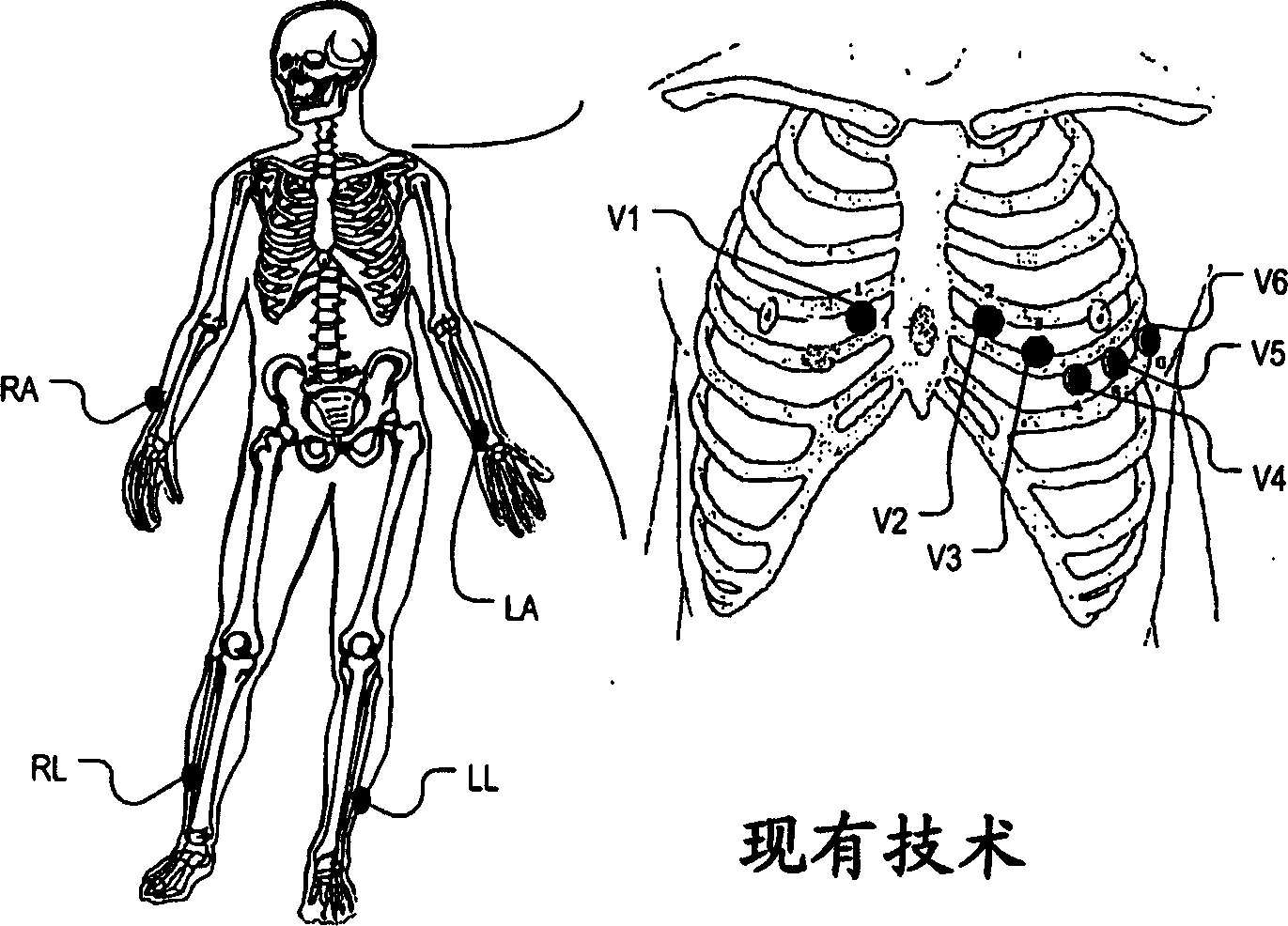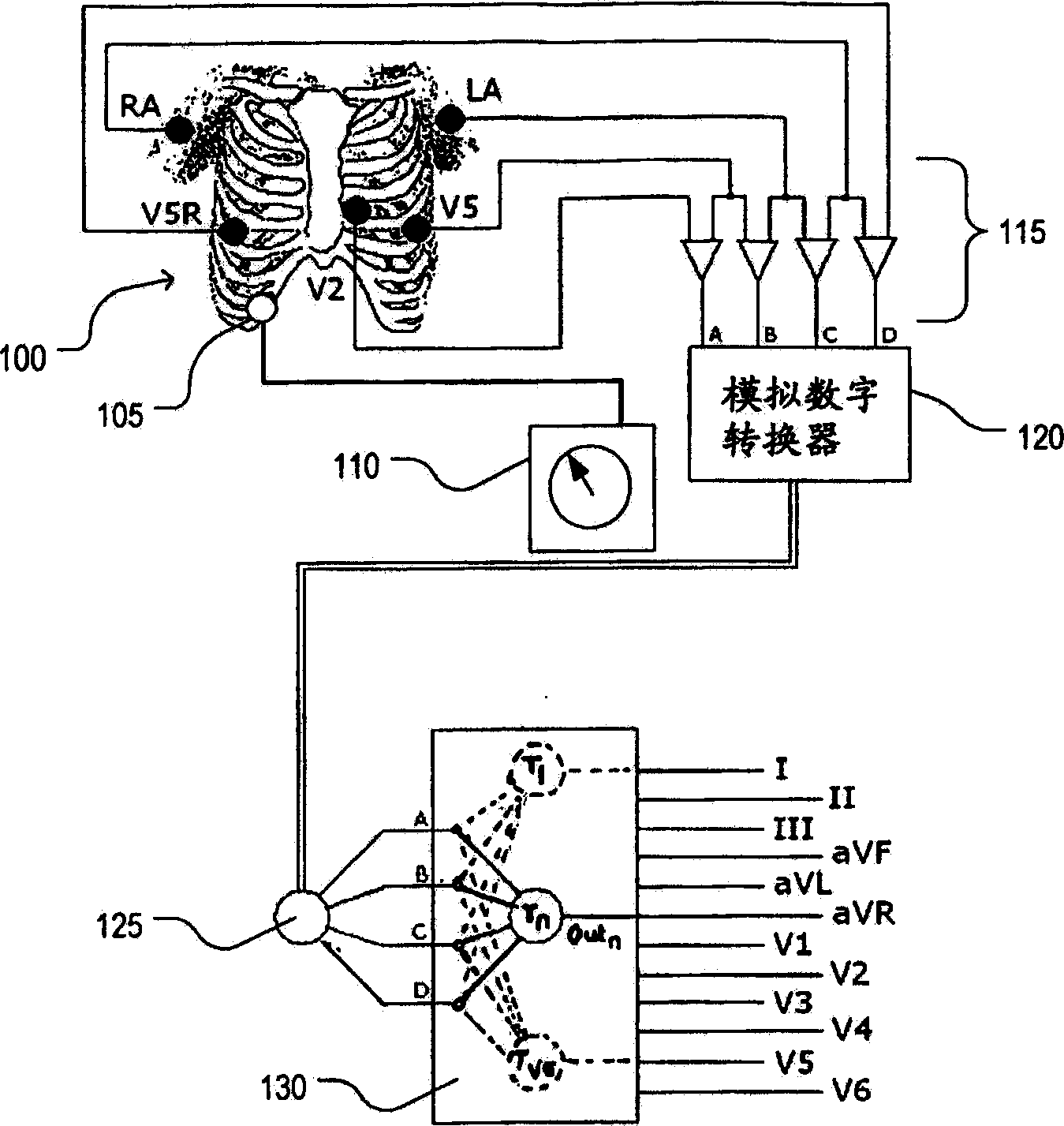Reduced electrode electrocardiography system
An electrocardiogram and electrode technology, applied in the field of electrocardiogram system, can solve the problems that patients are not constant, prone to errors, and unfamiliar
- Summary
- Abstract
- Description
- Claims
- Application Information
AI Technical Summary
Problems solved by technology
Method used
Image
Examples
Embodiment Construction
[0114] figure 1 A standard 12-lead electrocardiogram (ECG) system is illustrated, well known in the art, where 12 "leads" (or signals) are obtained from a patient using 10 electrodes placed on the skin. These electrodes were placed in standardized positions as described below: electrode RA on the right wrist; electrode LA on the left wrist; electrode LL (or F) on the left ankle; electrode RL (or reference electrode) on the right ankle; electrode V1 At the fourth intercostal space on the right border of the sternum; electrode V2 at the fourth intercostal space on the left border of the sternum; electrode V4 at the fifth intercostal space on the left midclavicular line; electrode V3 between V2 and V4; electrode V5 at the level of V4 on the left anterior axillary line; the level of electrodes V6 and V5 on the left midaxillary line. It should be noted that limb electrodes are often placed on the patient's upper arms and thighs, and this movement produces only minimal changes to t...
PUM
 Login to View More
Login to View More Abstract
Description
Claims
Application Information
 Login to View More
Login to View More - R&D
- Intellectual Property
- Life Sciences
- Materials
- Tech Scout
- Unparalleled Data Quality
- Higher Quality Content
- 60% Fewer Hallucinations
Browse by: Latest US Patents, China's latest patents, Technical Efficacy Thesaurus, Application Domain, Technology Topic, Popular Technical Reports.
© 2025 PatSnap. All rights reserved.Legal|Privacy policy|Modern Slavery Act Transparency Statement|Sitemap|About US| Contact US: help@patsnap.com



